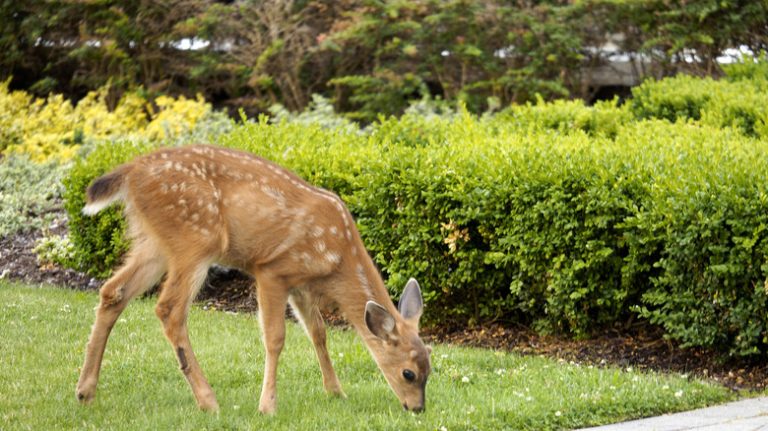The Orange Peacock Flower Tree, also known as Poinciana or Orange Flame Tree, is a tropical plant native to Madagascar. It belongs to the Fabaceae family, and is widely grown for its vibrant orange flowers and attractive foliage.
The Orange Peacock Flower Tree is a fast-growing and evergreen tree that can reach a height of up to 40 feet. Its leaves are fern-like and have a dark green color. The tree blooms during the summer, producing large clusters of orange flowers that resemble the feathers of a peacock, hence its common name.
The Orange Peacock Flower Tree is well-suited for the tropical and subtropical regions, where it can thrive in a variety of soil types. It prefers a well-drained soil, and is resistant to drought, frost, and pest infestations. It can also tolerate high temperatures and strong winds.
When planting the Orange Peacock Flower Tree, it is important to choose a location that receives full sun. The tree requires regular watering, especially during dry spells, but over-watering should be avoided to prevent root rot. It is recommended to apply an organic fertilizer once a month during the growing season to enhance the plant’s growth and flowering.
The Orange Peacock Flower Tree has become a popular ornamental tree in many tropical and subtropical regions around the world due to its stunning flowers and attractive foliage. It adds a splash of color to any garden or landscape, and its flowers also attract birds and butterflies.
In conclusion, the Orange Peacock Flower Tree is a beautiful and resilient plant that can enhance the aesthetic appeal of any garden or landscape. Its vibrant orange flowers and attractive foliage make it a perfect choice for those who want to add a touch of tropical beauty to their outdoor space. With proper care and maintenance, this tree can thrive and become a focal point in any environment.
The Peacock Flower and Reproductive Resistance
The Peacock Flower (Delonix regia), also known as the Orange Peacock flower tree, is a magnificent tree that can be found in many gardens and landscapes around the world. Its vibrant orange flowers and lush foliage make it a popular choice for home gardens and ornamental parks.
Within the Poinciana family, the Peacock Flower holds a special place due to its unique characteristics. The flowers, which are always a bright shade of orange, gradually change from a bluish-green color as they bloom. This stunning transformation brings light and color to any garden.
The Peacock Flower is not demanding in terms of care, making it a suitable choice for both experienced gardeners and novices. It can adapt to various environments and soil types, although it grows best in temperate climates.
For optimal growth, the Peacock Flower requires regular watering and occasional fertilizers. When planting the tree, it is advisable to use organic fertilizers, such as peanut meal or black board. These natural fertilizers provide the necessary nutrients without harming the environment.
The Peacock Flower is known for its resistance to wind and temperature fluctuations. Its strong branches and deep-rooted base help it withstand harsh weather conditions, making it a reliable addition to any garden. Additionally, the flowers’ botany contributes to their resistance, as the pulcherrima species has adapted over time to thrive in various climates.
In terms of reproductive resistance, the Peacock Flower has a unique way of propagating. The fruits of the tree contain large black seeds that are enclosed in long pods. These pods burst open, scattering the seeds around the tree, ensuring the survival and expansion of the species. This natural method of reproduction allows the Peacock Flower to spread and thrive without the need for human intervention.
Growing a Peacock Flower can be a rewarding experience for gardeners around the world. The stunning flowers, resistant nature, and minimal care requirements make it a favorite choice for many. By following a few tips, such as regular watering, proper fertilization, and providing a suitable environment, anyone can enjoy the beauty of the Peacock Flower in their own garden.
Despite its ornamental value, the Peacock Flower also holds political significance in some parts of the world. It has been used as a symbol of resistance and freedom in various historical events, stating that its beauty should not overshadow its deeper meaning.
In conclusion, the Peacock Flower is a remarkable tree that adds beauty and vibrancy to any landscape. Its orange flowers and lush foliage bring color and life to home gardens and ornamental parks. With its resistance to wind and temperature fluctuations, as well as its unique method of reproduction, the Peacock Flower is a perfect addition to any garden. Whether for its aesthetic value or deeper political symbolism, this tree is a true marvel of nature.
Orange Peacock flower tree
The orange peacock flower tree, also known by its scientific name Poinciana pulcherrima, is a tropical tree that is grown for its stunning orange flowers. It is native to Madagascar and is now cultivated in many parts of the world for its ornamental attributes.
The orange peacock flower tree gets its name from the vibrant orange color of its flowers, which resemble the colorful plumage of a peacock. The tree has bluish-green foliage and its flowers bloom in clusters at the base of the leaves.
This tree is known for its ability to withstand high temperatures and strong winds. It prefers a well-drained soil and requires regular watering, especially in dry climates. Organic fertilizers can be used to promote its growth and flowering.
When planting the orange peacock flower tree, it is important to note that it is not frost resistant. It should be planted in a warm and sunny spot in the garden or home where it can receive plenty of light. Pruning is recommended to keep the tree in shape and remove any dead or diseased branches.
One interesting feature of the orange peacock flower tree is its reproductive strategy. The flowers of the tree produce flowers that are attractive to bees and birds, which play a role in pollination. The tree then produces long seed pods that resemble peanuts, hence its name “peacock”. The seeds inside the pods are dispersed by the wind.
In addition to its ornamental value, the orange peacock flower tree has some cultural and historical significance. It is featured in the European botanical book “Deyrolle” and has been planted in the Elysée Palace in Paris, where it serves as a political symbol. Its flowers were also used by indigenous people in the past as a source of black dye.
Overall, growing and caring for the orange peacock flower tree requires some experience and knowledge of its specific needs. With the right environment, soil, light, and waterings, this tree can make a beautiful addition to any garden or home.
Deyrolle board
The Deyrolle board is a blackboard that displays information about the Orange Peacock flower tree. It provides essential knowledge on the characteristics, care, and growing requirements of this tropical tree.
The Deyrolle board emphasizes the importance of watering the plant and keeping it in a well-lit environment. It suggests using organic fertilizers and notes the tree’s height and resistance to pests. The board also mentions the plantation history of the Orange Peacock flower tree, which was brought to Europe from its native environment.
For successful planting and care, the board advises always keeping an eye on the waterings and providing the tree with the right amount of light. It also highlights the tree’s ornamental value with its vibrant orange flowers that resemble the feathers of a peacock.
The Deyrolle board additionally mentions that this tree is known by many names, including Orange Peacock flower tree, Poinciana, and Royal Poinciana. It explains the reproductive nature of the tree and its ability to gradually spread through the wind.
Within the world of gardens, the Orange Peacock flower tree is considered a perfect addition to any landscape. Its colorful flowers and lush foliage make it a standout choice for any garden or outdoor space.
The Deyrolle board also provides some tips on caring for the tree. It recommends regular waterings and proper fertilization. It notes the tree’s resistance to diseases and suggests keeping an eye out for any signs of trouble. The board highlights that experience in gardening and botany will greatly contribute to the successful growth of the Orange Peacock flower tree.
In conclusion, the Deyrolle board serves as an informative source for anyone interested in the Orange Peacock flower tree. Its detailed information about the tree’s characteristics, care, and planting tips make it a valuable resource for enthusiasts and experts alike.
Growing tips
If you want to grow an Orange Peacock flower tree in your garden, here are some essential tips to follow:
1. Planting: Choose a perfect spot in your garden where the tree will get plenty of sunlight. The soil should be well-drained and rich in organic matter. Dig a hole twice as wide and deep as the root ball, and place the tree in the hole. Fill the hole with soil and water thoroughly.
2. Care: Water the tree regularly, especially during the dry season. Give it enough water to keep the soil moist, but not waterlogged. Fertilize the tree with a balanced organic fertilizer once a month during the growing season. Pruning is not necessary for the Orange Peacock flower tree, but you can trim it to maintain a desired shape.
3. Height and nature: The Orange Peacock flower tree can grow up to 15-25 feet in height, making it a perfect addition to any landscape. Its black and bluish-green foliage adds an attractive touch to any garden.
4. Flower characteristics: One of the special attributes of the Orange Peacock flower tree is its beautiful orange flowers. These flowers are an ornamental delight, attracting birds and insects like butterflies. The tree blooms from spring to summer, and the flowers gradually turn black as they age.
5. Resistance to diseases: The Orange Peacock flower tree is generally resistant to diseases and pest attacks. However, it may be susceptible to frost in colder regions, so provide appropriate protection during harsh winters.
In conclusion, the Orange Peacock flower tree is a stunning addition to any garden or landscape. Its beautiful orange flowers, black and bluish-green foliage, and overall resistance to diseases make it an excellent choice for both amateur and experienced gardeners.
Sources:
– European Garden Flora
– “Orange Peacock Flower Tree Care and Planting Tips” by the Black Poinciana Tree Board




